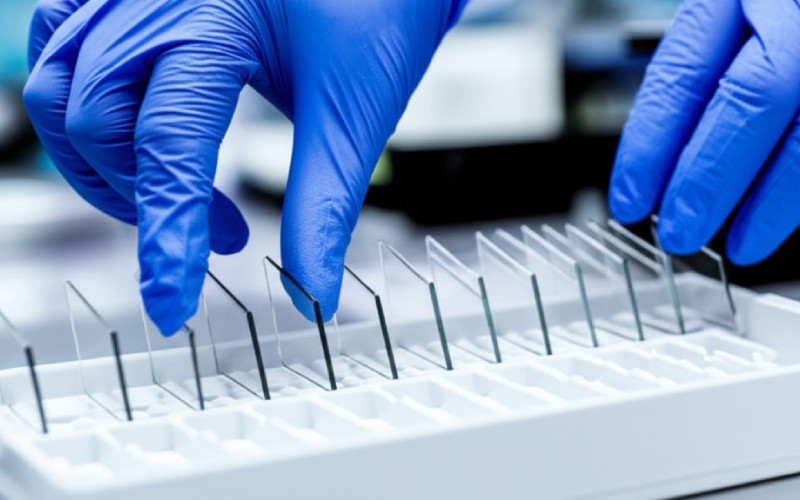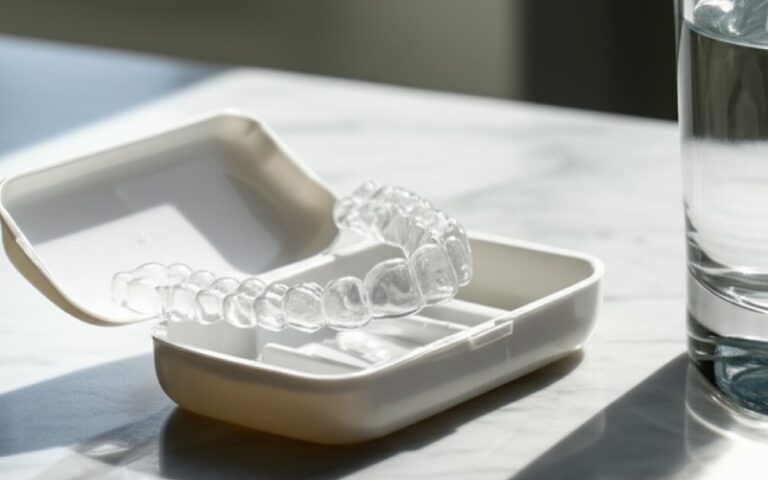
VPN et cancer buccal : ce qu’un résultat de test négatif signifie réellement pour vous
I’ve spent a lot of my career looking at medical data. I’ve seen how numbers and terms can confuse people. One term that is very important is NPV, or Negative Predictive Value. This is extra true when we talk about oral cancer. This article will help you understand NPV. It will tell you what a negative test for oral cancer really means. Knowing this can help you feel more sure about your health. It can also help you have better talks with your doctor about oral cancer screening and the early detection of oral cancer. This knowledge is power.
Table des matières
What Is Oral Cancer and Why Is Early Detection a Big Deal?
When I look at global cancer statistics, I see that oral cancer is a major cancer. It is a type of head and neck cancer. Most of these cancers are called oral squamous cell carcinoma. This type of cancer starts in the flat cells that line your mouth, or oral cavity. It can be found on your tongue, gums, or the inside of your cheeks. The oral cavity is a place we use every day, so we want to keep it healthy.
The good news is that early detection makes a huge difference. When found early, the chance of a good outcome is much higher. The problem is that early oral cancer is often painless. It might just look like a small white or red spot. This is why regular checks are so key for early detection. We want to find these spots before they grow. The National Cancer Institute pushes for more work on the early detection of oral squamous cell carcinoma. Finding it early saves lives. A detailed systematic review of studies shows this again and again.
How Do Doctors Check for Problems in the Oral Cavity?
Your dentist or doctor has a few ways to check your oral cavity for signs of trouble. The first step is usually a visual oral examination. They will look and feel inside your mouth for any lumps or strange spots, called oral lesions. This is a basic part of oral cancer screening. It is simple and does not hurt. It is a good first step in the detection of oral cancer.
If they see something that worries them, they might use another tool. One common tool is the oral brush. An oral brush test uses a small, stiff brush to collect cells from a spot in your mouth. Think of it like a tiny scrub brush for a very small area. The cells are then sent to a lab to be looked at under a microscope. Using oral brush tools is one way to get more information without cutting out tissue right away. Several studies have shown the oral brush is a useful part of oral cancer detection. It’s a key step in the diagnosis of oral cancer.
What Are Oral Potentially Malignant Disorders?
Sometimes, a spot in your mouth isn’t cancer yet, but it could turn into cancer later. These spots are called oral potentially malignant disorders. Think of them as warning signs. Finding these early gives us a great chance to act before cancer development happens. A good oral cancer screening program looks for these disorders, not just for cancer itself. The detection of oral potentially malignant disorders is a big goal in cancer prevention.
There are a few types of these disorders. You might hear your doctor talk about oral lichen planus, which can cause lacy white lines or sores in the oral cavity. Another is oral submucous fibrosis, which makes the mouth stiff. These oral potentially malignant disorders increase the risk of developing oral squamous cell carcinoma. Seeing a doctor about any oral lesions is a great step. A risk prediction model might even be used to check your risk of oral cancer. We need more research on biomarkers for cancer to spot these high risk changes. One systematic review looked at many studies to understand this risk better.
Can a Risk Prediction Model Tell Me My Chances?
Yes, in a way. I’ve seen a lot of work go into creating a risk prediction model for oral cancer. A risk prediction model is a tool that uses information about you to guess your risk. It looks at risk factors for oral cancer, like your age, if you smoke or drink, or if you have the HPV virus. HPV is a known cause for some head and neck cancer. A good model for oral health can predict the risk of cancer.
These models are not a crystal ball. They can’t say for sure if you will get oral cancer. But they can help doctors decide who is at high risk. If you have a higher risk, your doctor might suggest more frequent oral cancer screening. The goal of a risk prediction model is to help focus our efforts on the people who need it most. Many studies, some in journals like BMC Cancer or Oral Oncol, are trying to make a better risk prediction model. A systematic review can help us find the best models. We want to predict the risk as well as we can. This is a big part of advances in oral cancer research.

What Do Sensitivity and Specificity Mean for Tests?
When we talk about any medical test, you will hear two words: sensitivity and specificity. Let me break them down for you. Sensitivity is a test’s ability to find people who faire have the disease. A test with high sensitivity will not miss many people who are sick. It’s good at saying “yes, there is a problem here.”
Specificity is the other side of the coin. It is a test’s ability to find people who do pas have the disease. A test with high specificity is very good at saying “no, there is no problem here.” It does not give a lot of false alarms. A good test for the detection of oral lesions needs the right balance of sensitivity and specificity. We learn about a test’s sensitivity and specificity from big studies. Sometimes a systematic review and meta-analysis is done to get the most accurate numbers.
What is NPV and Why Does It Matter for Oral Cancer Detection?
Now we get to the big one: NPV. NPV stands for Negative Predictive Value. This number tells you how likely it is that you are truly healthy if your test result is negative. Let’s say a test has a very high NPV. If you take that test and it comes back negative, you can feel very sure that you do not have the disease. It’s a measure of trust in a negative result.
This is a huge deal for oral cancer screening. We want to find every case of oral cancer, but we also don’t want to cause needless worry. A test with a high NPV, like a good oral brush test, is great for ruling out cancer. If your oral brush test is negative, the high NPV means there’s a very, very small chance the test missed something. The negative predictive value helps us avoid more invasive tests if they are not needed. A high NPV gives peace of mind. The positive predictive value, on the other hand, tells you the chance you have the disease if you test positive. We need to know the NPV of any new model for oral cancer.
How Good is the Oral Brush Test at Finding Cancer?
I’ve read many studies on the oral brush test. It’s one of the most studied tools for the detection of oral squamous cell carcinoma. So, how good is it? Many reports, including a large systematic review and meta-analysis, have looked at the oral brush. These studies check the sensitivity and specificity of the oral brush test when it is used on suspicious oral lesions.
The results are pretty good, especially for one key number. The oral brush test has a very high NPV. This means if your oral brush test comes back negative for oral squamous cell carcinoma, it is very unlikely that you have it. The oral brush is a great tool to help a dentist or doctor rule out cancer in a suspicious spot. Some studies reported in Oral Oncol show the oral brush helps in the early detection of oral cancer. This makes the oral brush a key part of modern oral cancer detection. We must assess the risk of bias in these studies, but the evidence is strong.
What Does a High NPV Mean for You and Your Doctor?
A high NPV changes how we approach oral cancer screening. Imagine your doctor sees a small white spot in your oral cavity. In the past, the next step might have been to cut it out for a biopsy. This can be painful and cause stress. But now, your doctor might use an oral brush first. Because we know the oral brush test has a high NPV, a negative result is very reassuring.
For you, this means you might be able to avoid a painful procedure. For your doctor, it means they have a reliable tool to help them decide what to do next. It helps them put patients into a low risk or high risk group for more follow-up. A high NPV for a test like the oral brush means we can be more confident in our oral cancer diagnosis process. A good systematic review will confirm the NPV of a test, so we can trust it. A test with a high NPV is a cornerstone of good cancer prev programs.
Are There New Ways to Find Oral Cancer Early?
The world of science is always moving. I’m excited to see new research on the detection of oral cancer. Scientists are looking for biomarkers for oral cancer. A biomarker is something in your body, like in your blood or saliva, that can signal a disease. Finding reliable biomarkers would make oral cancer screening much easier. For example, some researchers are studying oral rinses that can pick up cancer cells.
Other amazing work is being done on genes in oral cancer. Scientists are studying things like DNA methylation biomarkers. These are tiny changes to your DNA that can happen when oral carcinogenesis, or cancer formation, begins. A simple test using oral rinses could one day be a common model for oral health checks. A risk prediction model could use these biomarkers to predict the risk of developing oral cavity cancer. This work is still young, but it’s very promising for the future of early detection. These new tools are checked in studies found in journals like Oral Oncol or Cancer J.
How Does a Systematic Review Help Us Trust These Tests?
You’ve heard me say “systematic review” a lot. Why is it so important? A single study can be wrong. It might have problems, which we call a high risk of bias. A systematic review is like a super-study. Researchers find all the good studies on one topic, like the oral brush test. Then they carefully look at all of them together. They even assess the risk of bias and applicability for each one.
This gives us a much stronger answer than any single study can. A systematic review and meta-analysis pools all the data to get the best numbers for things like sensitivity and specificity and NPV. When a systematic review says the oral brush test has a high NPV for oral squamous cell carcinoma, we can be very confident in that. It helps us build a strong risk prediction model and improve oral cancer screening for everyone. It’s the best way we have to know what really works in the detection of oral dysplasia and oral cancer.

Ce qu'il faut retenir
- Early is Best: Early detection of oral cancer saves lives. The most common type is oral squamous cell carcinoma.
- See Your Doctor: Regular oral cancer screening with a visual oral examination is your first line of defense against oral cavity cancer.
- NPV is Your Friend: NPV (Negative Predictive Value) tells you how much you can trust a negative test result. A high NPV is great news.
- The Oral Brush is a Good Tool: The oral brush test has a high NPV. This means it is very good at ruling out oral cancer in a suspicious lesion.
- Ask Questions: Talk to your doctor about your risk of oral cancer and what screening tests are right for you. Understand your test results.
- Trust Big Studies: A systematic review gives us the most reliable information on tests because it looks at many studies at once and checks for a high risk of bias.




